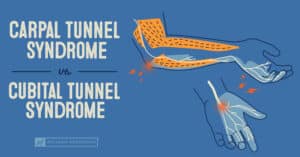Often when thinking of an injury, you may imagine it as a singular event. However, injuries are holistic in the sense that they can affect other parts of your body as well as lifestyle. With some areas of the body, you may feel pain in one spot, even though the injury is in another, such as with bicep tendonitis.
Bicep tendonitis occurs when one of the tendons connected to your biceps brachii becomes irritated or inflamed. This is usually the result of overuse or stress from repetitive actions. While the injury may be localized to that spot, bicep tendonitis can lead to changes in the rest of your body and begin to shift the way you approach your daily routines.
How Bicep Tendonitis Affects Your Body
As mentioned, though an injury may be at one location, that won’t stop it from possibly affecting other areas too. As an arm injury, bicep tendonitis can often lead to wrist, elbow, or shoulder pain, as well as limited range of motion. You may not even realize that the pain in the various parts of your arm could be stemming from a bicep injury.
It is important to quickly deduce that you are suffering from bicep tendonitis. If left untreated, bicep tendonitis can develop into chronic pain that may require more serious treatment. Additionally, muscle groups may try to compensate for the weakened muscles and tendons potentially leaving you with additional injuries, such as rotator cuff injuries or arthritis in your wrist.
How Your Lifestyle Could Be Affected
In tandem with affecting other body parts, bicep tendonitis can disrupt your social, work, and personal life. You may notice that you can no longer perform certain hobbies, such as gardening, or being able to lift and carry your children for long periods of time. If your work requires physical labor, you may not be able to perform your duties.
For those who are regularly active, bicep tendonitis can sideline you from your sport or regularly exercising. Many sports, such as tennis and baseball, that require repetitive arm motions can be strenuous on your biceps. Additionally, bicep tendonitis might set back any athletic progress you’ve made and can lead to a more sedentary lifestyle. Those who are sedentary due to injuries face an increased risk of comorbidities, as well a higher risk of developing mental health issues, such as depression and anxiety.
Exercises That Can Help Relieve Bicep Tendonitis
While a mild case of bicep tendonitis can heal with time and rest, more moderate cases may require some intervention. Luckily, you can be proactive and help the process along! Try these 2 exercises below that can help relieve any pain you could be suffering from because of bicep tendonitis.
DISCLAIMER: You should always consult with your doctor before any exercise program. If you experience any numbness, tingling, or reproduction of your symptoms, please contact your doctor.
- For this exercise you will need a foam roller. You are going to be stretching the pec major and pec minor muscle or your chest muscles.
- Sit on the end of the foam roller, letting the foam roller go the length of your spine and making sure that your head is supported.
- Bring your arms out to your side with your elbows bent, and then allow your arms to fall to the floor.
- This is going to be stretching more of the pec major muscle.
- To adjust this position and stretch more of the pec minor chest muscle, you are going to bring your arms up a little more overhead and again relax in this position letting your arms fall to the floor.
- This exercise should be pain free. If you experience any discomfort, tingling and or numbness, limit the range in which you are stretching.
- Complete 2 sets of 1 minute, 1-2 times a day.
2. Scapular Low Row with Resistance Band
- For this exercise you will need the elastic band. You are going to be working on shoulder and scapular stabilizers or the stabilizers of the shoulder blade.
- Tie your band off to a stable surface and then grab on to each end of the band and then wrap it around your hands so that you have good grip.
- Bring your shoulder blades back and down, making sure you keep your core nice and tight so that you are not overarching in the low back and maintain this position throughout the entire exercise.
- Keep your wrists and your elbows locked out right beside you.
- Then move both arms towards where the band is tied off and then pull back to feel this around the backside of your shoulder and around the shoulder blade.
- Make sure to breath normally.
- This exercise should be pain free. If you experience any discomfort, limit the range in which you are moving or decrease the tension in the elastic band.
- Complete 2-3 sets of 10, 1 to 2 times a day.
How Airrosti Can Help You!
An injury to your body can cause a domino effect on other body parts, as well as your lifestyle. If you are suffering from bicep tendonitis, don’t let it strain your life. Be proactive and schedule an appointment with Airrosti. Our Certified Providers will determine the cause of your injury, treating it right at the source. Additionally, your Provider will create an at-home routine to boost your recover, and give you access to the you need tools to ensure you recover!
Read our medical disclaimer here.










